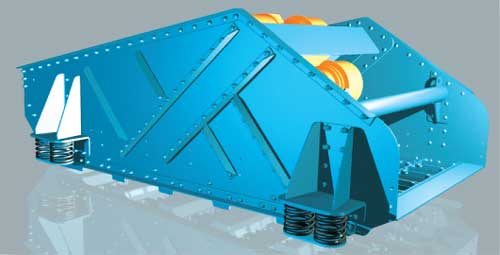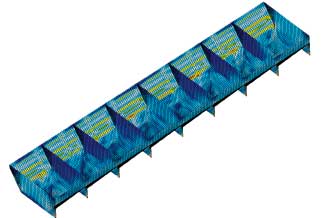Latest News
June 1, 2011
By Kenneth Wong
Andrew Sears, a mechanical engineer from Balzer Pacific, knew analysis took time and patience. The last time he ran analysis on the design of a dewatering screen, used in concrete and asphalt processing industries to separate sand and dirt from rocks, it took his Dell Precision T3400 workstation (8GB RAM, 64-bit OS, Intel Core2 Duo processors) roughly eight hours to complete the job.

|A Balzer Pacific dewatering screen, designed in Autodesk Inventor.
The purpose of the analysis was to figure out the ideal plate thickness, the configuration that satisfies the required factor of safety with the least amount of steel. Ultimately, Sears and his colleagues determined that the plate thickness was the best variable with which to experiment. Sears came up with four design options. The analyses on all four, he estimated, would take his computer about two days. Then he remembered a feature in Autodesk Inventor he d heard about.
At the time, the Inventor Optimization feature was still a technology preview, downloadable from Autodesk Labs. For someone like Sears, the software could perform multiple simulations behind the scenes in the cloud, leaving the CPU cores in Sears machine free for whatever additional software he needed to run.
With the utility, Sears could upload all four scenarios to the remote server, specify variable parameters and the desired factor of safety, then collect the results. So he did.
“It brought back the results in an hour-and-a-half,” he recalls. That’s because the remote server that did the number crunching for Sears is powered by so many computing cores.
Somewhat bemused, Sears discovered he had overdesigned the screen. “In this industry, people tend to think bigger is better,” he says. The client, he points out, often thinks thinner plates are not strong enough to withstand the load, stress and vibration to which they’ll be subjected.
 Analysis results on barge hoppers, part of barge assembly from Balzer Pacific. |
Simple, Yet Secure
“Using the Optimization function is easier than using other analysis tools,” observes Sears, who also uses Autodesk Algor. “The way that it’s laid out, you click the first button, click the next button, click the third, and it’s ready to go.”
Sears would be the first to admit that the design of a dewatering screen is not exactly the stuff of industrial espionage. “But we are doing things that other companies might like to get their hands on,” he says.
Eventually, he discovered just how secure the data was when he needed to contact Autodesk tech support with a question.
“Can you send us your model?” asked the support technician.
“What do you mean? I uploaded it to your ]Optimization] server. Don’t you have that?” Sears replied.
It turns out, the built-in security protocols don’t discriminate. Even Autodesk officials can’t easily access the bits and bytes Sears uploaded.
Autodesk has hinted it plans to augment its software with value-added web services. Inventor Optimization feature is one such example. So far, Autodesk has not revealed how it plans to charge for these services. So, at least for the time being, Inventor Optimization remains free—much to the delight of Sears.
More Info
Autodesk
Kenneth Wong writes about technology, its innovative use, and its implications. One of DE‘s MCAD/PLM experts, he has written for numerous technology magazines and writes DE’s Virtual Desktop blog at deskeng.com/virtual_desktop. You can follow him on Twitter at KennethwongSF, or email him via [email protected].
Subscribe to our FREE magazine, FREE email newsletters or both!
Latest News
About the Author
Kenneth Wong is Digital Engineering’s resident blogger and senior editor. Email him at [email protected] or share your thoughts on this article at digitaleng.news/facebook.
Follow DE





